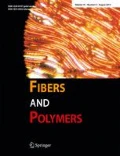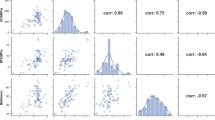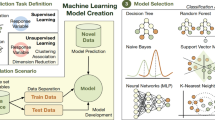Abstract
A new method for rotor spun yarn prediction from fiber properties based on the theory of support vector machines (SVM) was introduced. The SVM represents a new approach to supervised pattern classification and has been successfully applied to a wide range of pattern recognition problems. In this study, high volume instrument (HVI) and advanced fiber information system (Uster AFIS) fiber test results consisting of different fiber properties are used to predict the rotor spun yarn strength. The results obtained through this study indicated that the SVM method would become a powerful tool for predicting rotor spun yarn strength. The relative importance of each fiber property on the rotor spun yarn strength is also expected. The study shows also that the combination of SVM parameters and optimal search method chosen in the model development played an important role in better performance of the model. The predictive performances are estimated and compared to those provided by ANFIS model.
Similar content being viewed by others
References
L. Cheng and D. L. Adams, Text. Res. J., 65, 495 (1995).
S. Sette, L. Boullart, and P. Kiekens, Text. Res. J., 65, 200 (1995).
N. Deogratias and W. X. Hou, Fiber. Polym., 11, 97 (2010).
N. Deogratias and W. X. Hou, Fiber. Polym., 19, 782 (2008).
B. Karthikeyan and M. Sztandera, International Journal of Clothing Science and Technology, 22, 187 (2010).
Z. A. Malik, M. H. Malik, T. Hussain, and A. Tanwari, Ind. J. Fiber and Text. Res., 35, 210 (2010).
C. Cortes and V. Vapnik, Support-Vector Network, Machine Learning, 20, 273 (1995).
A. Ghosh and P. Chatterjee, Fiber. Polym., 11, 84 (2010).
P. H. Yap, X. Wang, L. Wang, and K. L. Ong, Text. Res. J., 80, 77 (2010).
Texas Cotton Quality Evaluation of Crop of 1997, International Textile Center, Lubbock, Texas.
N. Cristianini and J. Shawe-Taylor, “An introduction of Support Vector Machines and other Kernel-based Learning Methods”, Cambidge University Press, 2000.
N. Aronszajn, Theory of Reproducing Kernel, Trans. Amer. Math. Soc., 1950.
M. D. Ethridge, J. D. Towery, and J. F. Hembree, Text. Res. Inst., 52, 35 (1982).
J. S. R. Jang and N. Gulley, “The Fuzzy Logic Toolbox for Use with MATLAB”, The MathWorks Inc., 1995.
D. J. McCreight, R. W. Feil, J. H. Booterbaugh, and E. E. Backe, “Short Staple Yarn Manufacturing”, pp.311–375, 1997.
Author information
Authors and Affiliations
Corresponding author
Rights and permissions
About this article
Cite this article
Nurwaha, D., Wang, X. Prediction of rotor spun yarn strength using support vector machines method. Fibers Polym 12, 546–549 (2011). https://doi.org/10.1007/s12221-011-0546-x
Received:
Revised:
Accepted:
Published:
Issue Date:
DOI: https://doi.org/10.1007/s12221-011-0546-x




